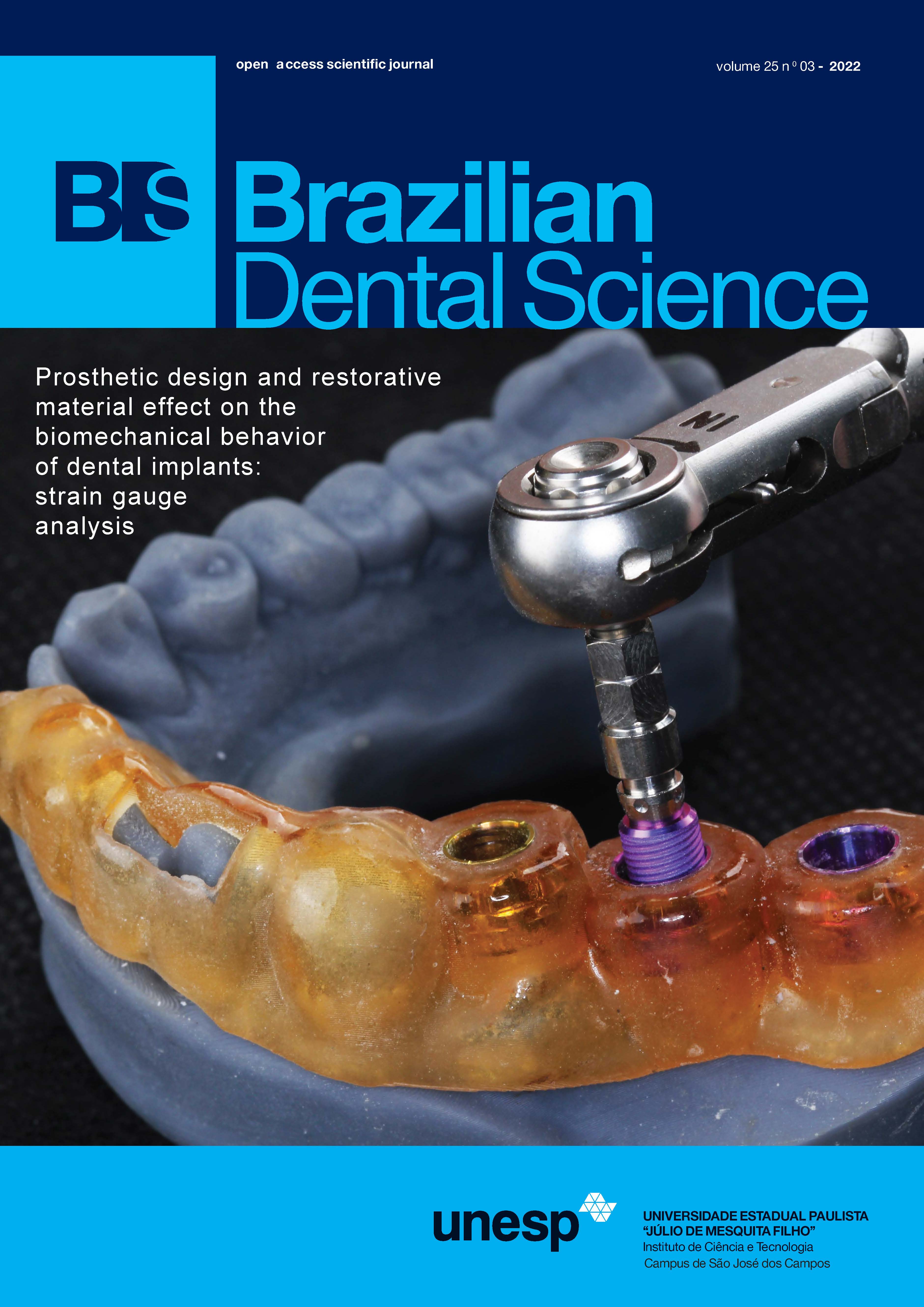The effect of attachment types and implant level on the stress distribution in a mandibular overdenture: a 3D Finite Element Analysis
DOI:
https://doi.org/10.4322/bds.2022.e3355Abstract
Objective: The objective of this study was to evaluate the stress distribution in bone-surrounding implants placed
in different levels in a mandibular overdenture. Material and Methods: A Computerized Tomography (CT) scan
of an edentulous mandible was used to generate the models. Two implants with an internal connection were
placed perpendicular to the occlusal plane in the Canine sites of the mandible. The implant in the left side was
placed 1mm higher than the other side. Dolder bar and ball attachments were designed. Loading was performed
by clenching the teeth with reconstruction of the muscles. In the anterior loading condition, force was applied
to the central incisors and in the posterior loading conditions, it was applied to the molars and premolars. Then
the Maximum Principal Stresses in the peri implant bone was evaluated with finite element analysis. Results:
In both models, the highest stress values were recorded in the cortical bone surrounding the higher implant
except in the ball model with unilateral load application on the right side (64.7 MPa). In almost all loading
conditions the stress value differences in models with bar and ball attachments were low. Only in the anterior
loading condition, the stress magnitude was higher in two implants of the ball model (60.5 MPa in the left side
and 21 MPa in the right side) compared to the bar model (54.5 MPa in the left side and 17.5 MPa in the right
side). Conclusion: The stress concentration did not affected considerably by the attachment system. High stress
values were found adjacent the implant with a higher level. To reduce the amount of stress, bilateral balance
occlusion should be considered.
KEYWORDS
Stress; Finite element analysis; Overdenture; Dental implants.
Downloads
Downloads
Published
How to Cite
Issue
Section
License
Brazilian Dental Science uses the Creative Commons (CC-BY 4.0) license, thus preserving the integrity of articles in an open access environment. The journal allows the author to retain publishing rights without restrictions.
=================




























